Group members: Will Brewster, Ellie Simon, Dylan Fox-Arnold, Isabel Rameker
Part 1: Preparation
Start time: 1:20 PM
Weather: High 30s/low 40s (F) and wet, rain held off during preparation
We started out by gathering and weighing our materials. The weights of our materials were as follows:
| Femur | 145.7 oz |
| Tail bone | 34.6 oz |
| Omentum | 7.7 oz |
| Omentum (2nd piece) | 1.7 oz |
| Heart | 11.1 oz |
| Kidney (half) | 7.7 oz |
| Liver (half) | 6.6 oz |
| Omentum-wrapped femur | 9lb 11.5 oz |
We originally wrapped the femur in a single piece of omentum but ended up going back for a part of another piece in order to cover the entire bone. The weights of both pieces are recorded separately above.
After gathering and weighing our materials, we built the altar using a total of ten logs stacked three, three, and then four on top. The top layer was arranged so that the bones could sit stably on top. We originally staked the splanchna on two separate Menards’ brand stakes but later switched them all over to one of the nicer stakes since roasting proved difficult.
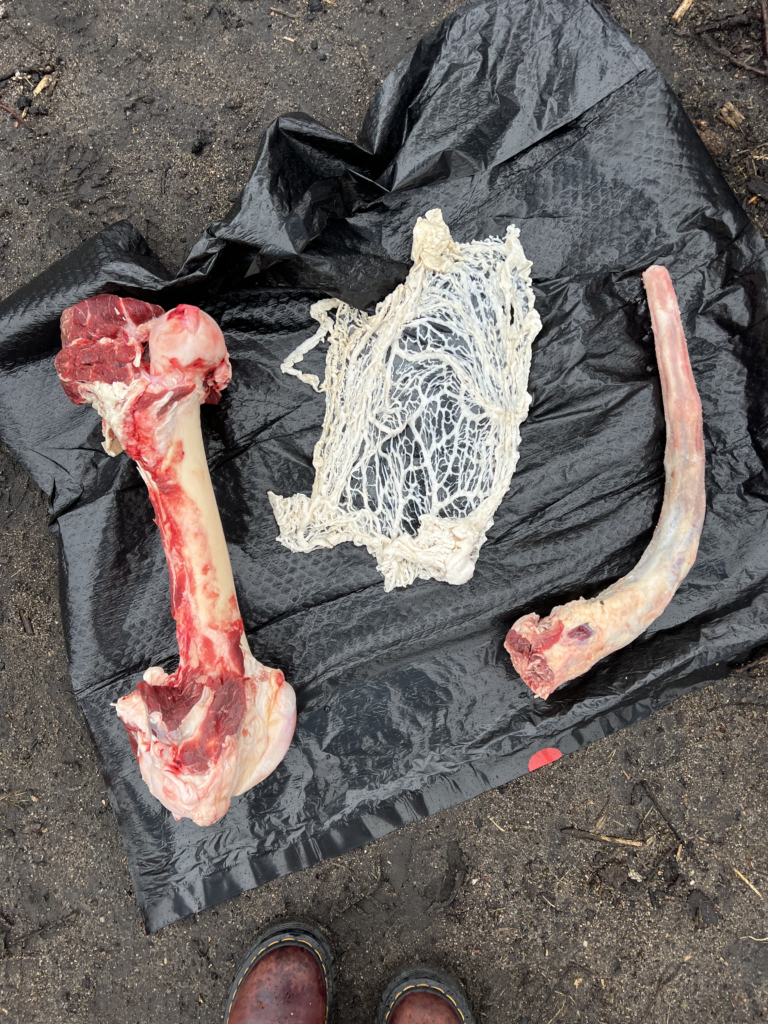


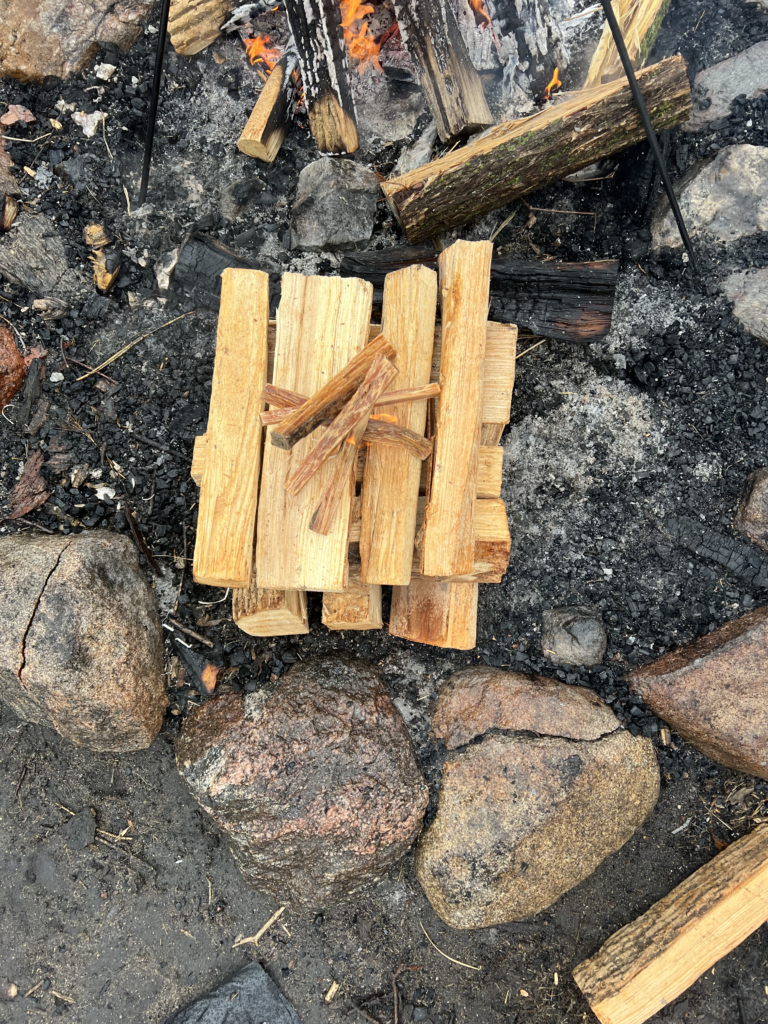

Part 2: Burning
Time: 1:41 PM
Weather: Started sprinkling
We lit the fire and then waited until the second layer of wood caught fire, about ten minutes, before placing the wrapped femur bone and the tailbone on top of the altar. We readjusted the tailbone a couple of times to make it more stable, and after initially straightening out it began curling at around 11 minutes of burning time. The tailbone and femur were on the fire for 25 minutes before they were mostly burnt, at which point we roasted the splanchna. After a couple of minutes of roasting on the Menards stakes, we paused and switched the organs over to a single nicer stake. This allowed us to turn the splanchna more easily, which let it cook more thoroughly on all sides. We took the temperature of the splanchna after 11 minutes of roasting and found that the heart was 135F, the liver was 125F, and the kidney was 130F. The splanchna collectively weighed 1lb 2.1 oz after roasting.

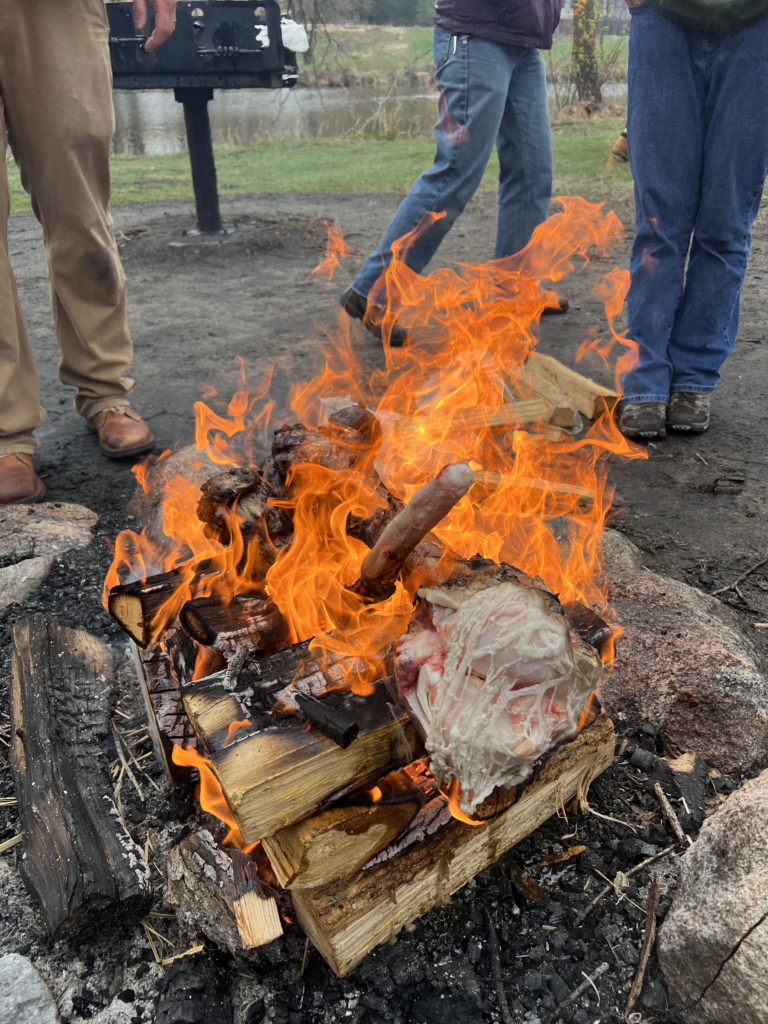
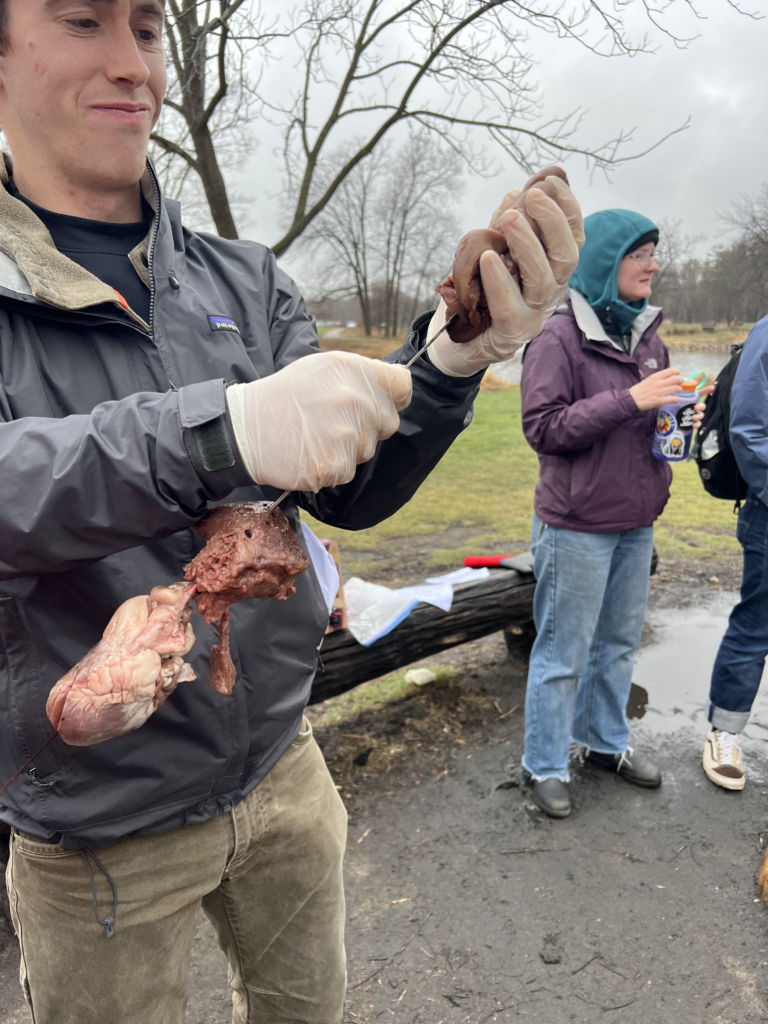
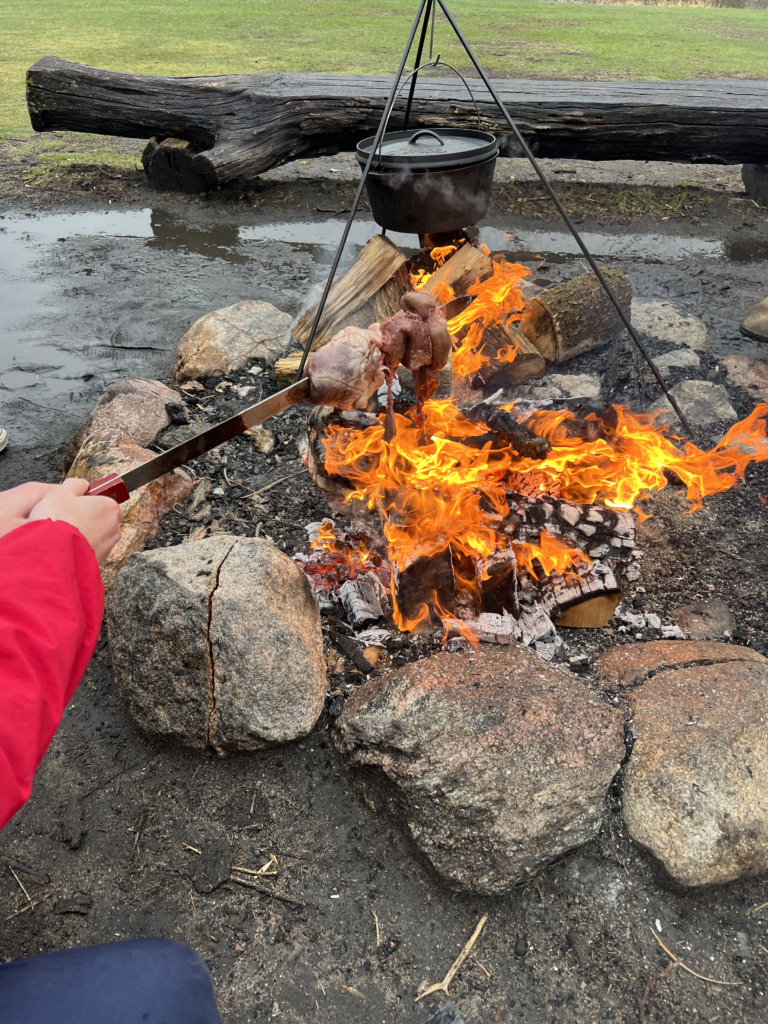
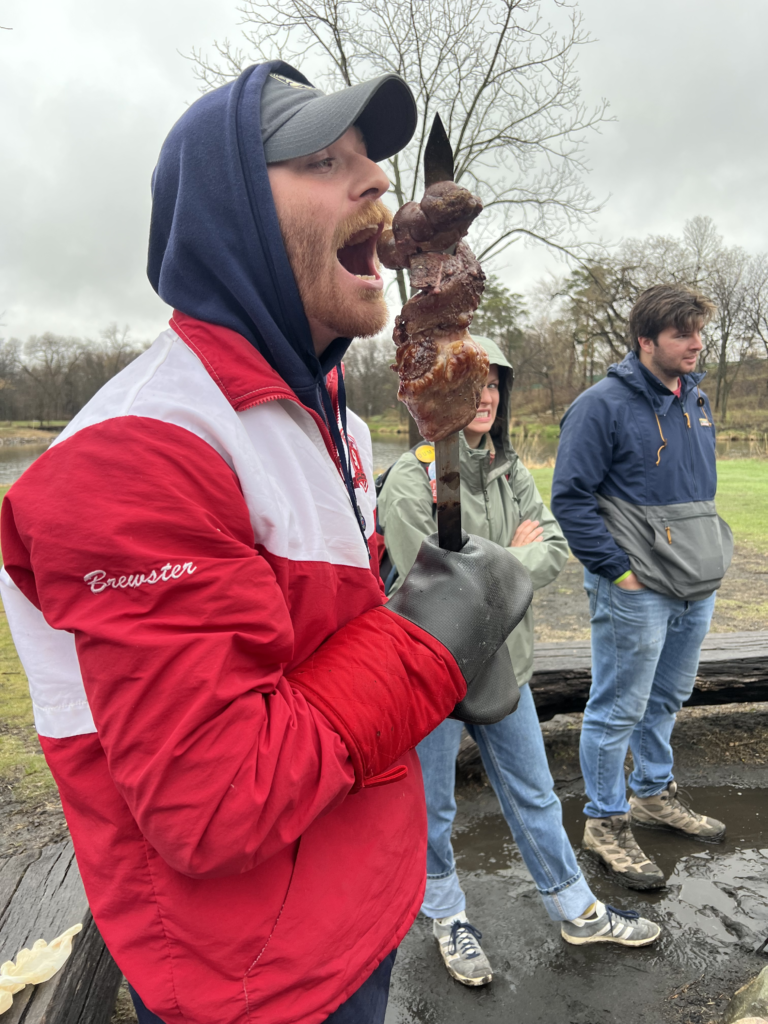
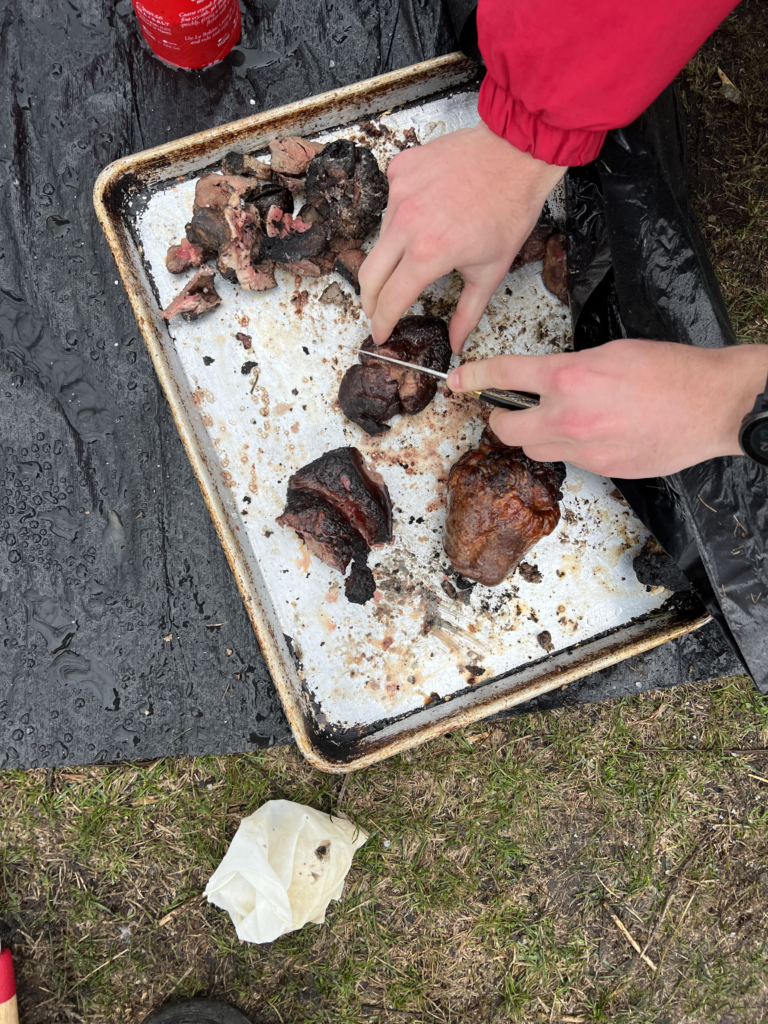
During the process, the bones emitted a sweet, smoky scent while burning. Because of the size of the fire and the placement of the bones, the ends of both didn’t initially burn. Partway through the process, we adjusted the bones so that most sides were burnt. After roasting the splanchna, some of us tasted the different parts. Taste-wise, the heart was the most-enjoyed organ. It had the texture and taste of steak, although ours was a bit rare so we didn’t eat much of it. Will described the liver as “horrendous, wet, and gummy” and said that it tasted metallic. The kidney was a bit overcooked and so its main descriptor was “chewy.” Throughout the burning, there was a lot of conversation, laughter, and collaboration. I found myself checking in on other groups’ progress and bouncing around to talk with different people. Overall, the process seemed to foster a deep sense of community and openness.
Part 3: After the Burning
Time: 2:32 PM
Weather: Sprinkling on and off
After removing all of the meat and bones from the altar, the final step in the process was quenching the fire with wine. The combination of the wine on the fire emitted a scent that our group described as visceral, sweet, and meaty. The smell was compared to both beef jerky and pho (at the moment the broth is poured over the raw meat to cook it). The fire continued to burn after quenching it with wine, although the flames went down considerably. Once removed from the altar, the bones appeared charred and brittle with the exception of one of the femur ends which remained mostly unburnt because of its placement on the altar.

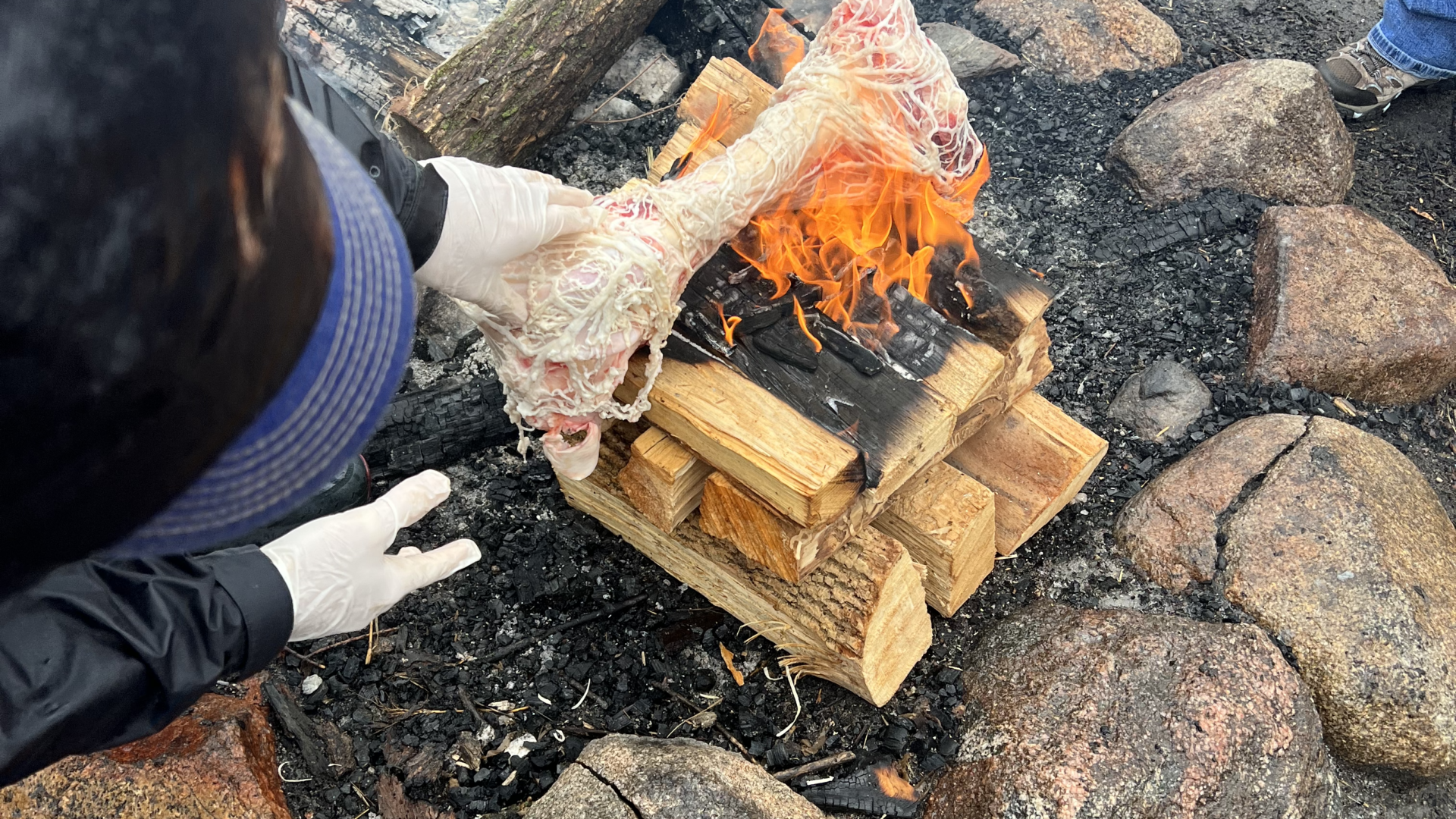
0 thoughts on “Group D: Ritual”